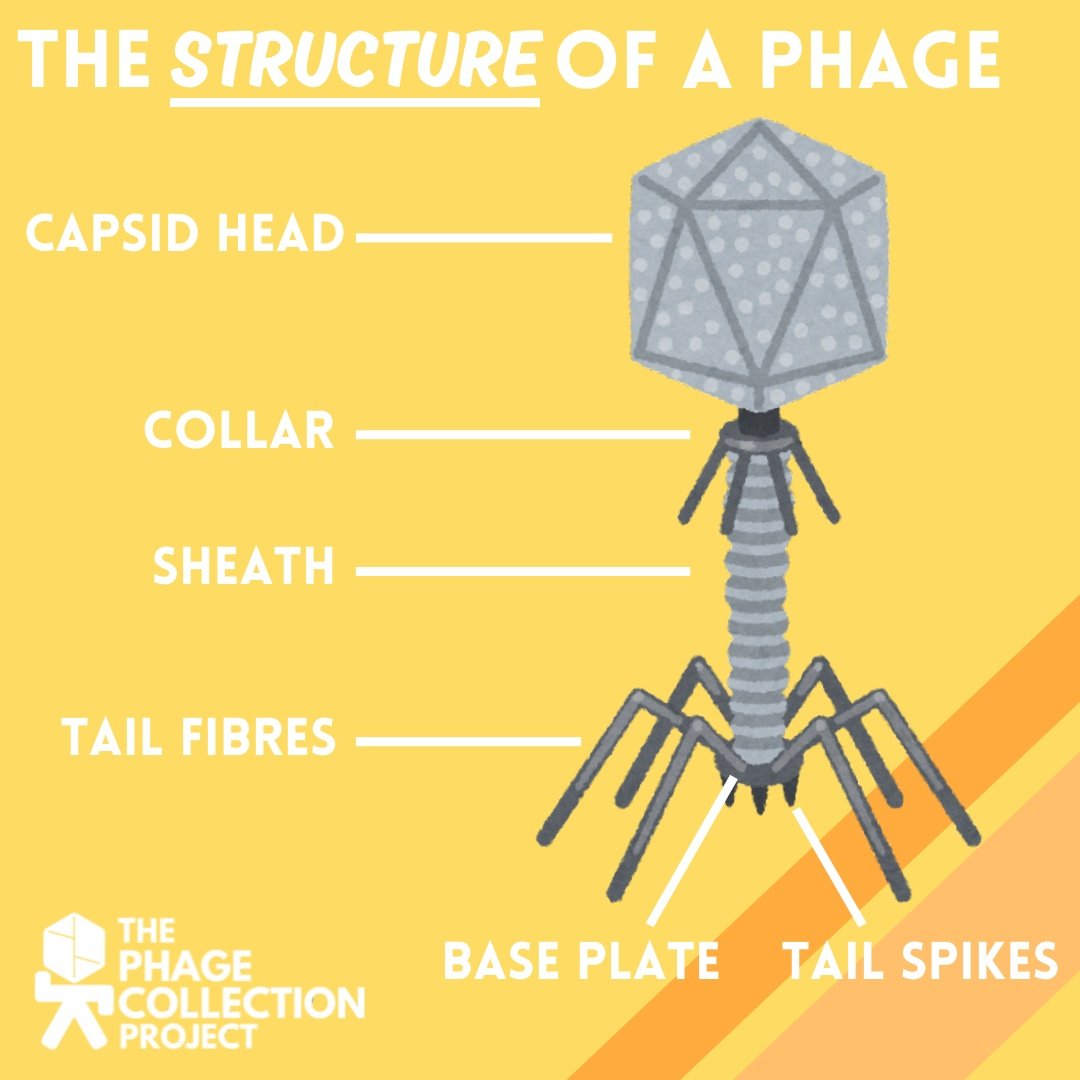Bacteriophages, often known as phages, are viruses which were discovered in 1915.
Unlike other viruses which can infect and cause damage to human cells, phages only infect and kill bacteria. This means that phages do not cause harm to humans.
Because phages are viruses, they are very small and can only be observed under a microscope.
Phages are becoming increasingly important in medical science, with the hope that they could be utilised to help fight against bacterial infections.
What are phages?
Where can we find phages?
Phages are the greatest biological entity on Earth! They can be found in any environment where bacteria reside, such as the world’s oceans, soils and lakes.
Phages also naturally exist in our bodies! Phages have been detected in the human gut, lungs and skin, playing an important role in controlling bacterial populations throughout the human body.
What do phages look like?
Phages are very diverse and come in a variety of shapes and sizes.
However, many phages possess structures such as a capsid head and tail fibres.
The capsid head of a phage is responsible for containing and protecting the phage’s genetic material. The tail fibres are important structures which enable the phage to recognise and bind to a bacterial cell.
How do phages infect and kill bacteria?
Phages infect and kill bacteria through a process known as the lytic lifecycle.
Stages of the lytic lifecycle:
A phage recognises and binds to a bacterial cell using its tail fibres to identify receptors on the surface of a bacterium.
Once bound securely, phages inject their genetic material into the bacterium.
The phage then hijacks and takes control of the bacterium, replicating and manufacturing each of its structural components, such as the capsid head.
Once all the phage components have been created, they assemble to form a fully functional phage.
The phages go on to degrade the bacterial cell, causing the bacteria to die, whilst enabling the phages to be released into the surrounding environment.



